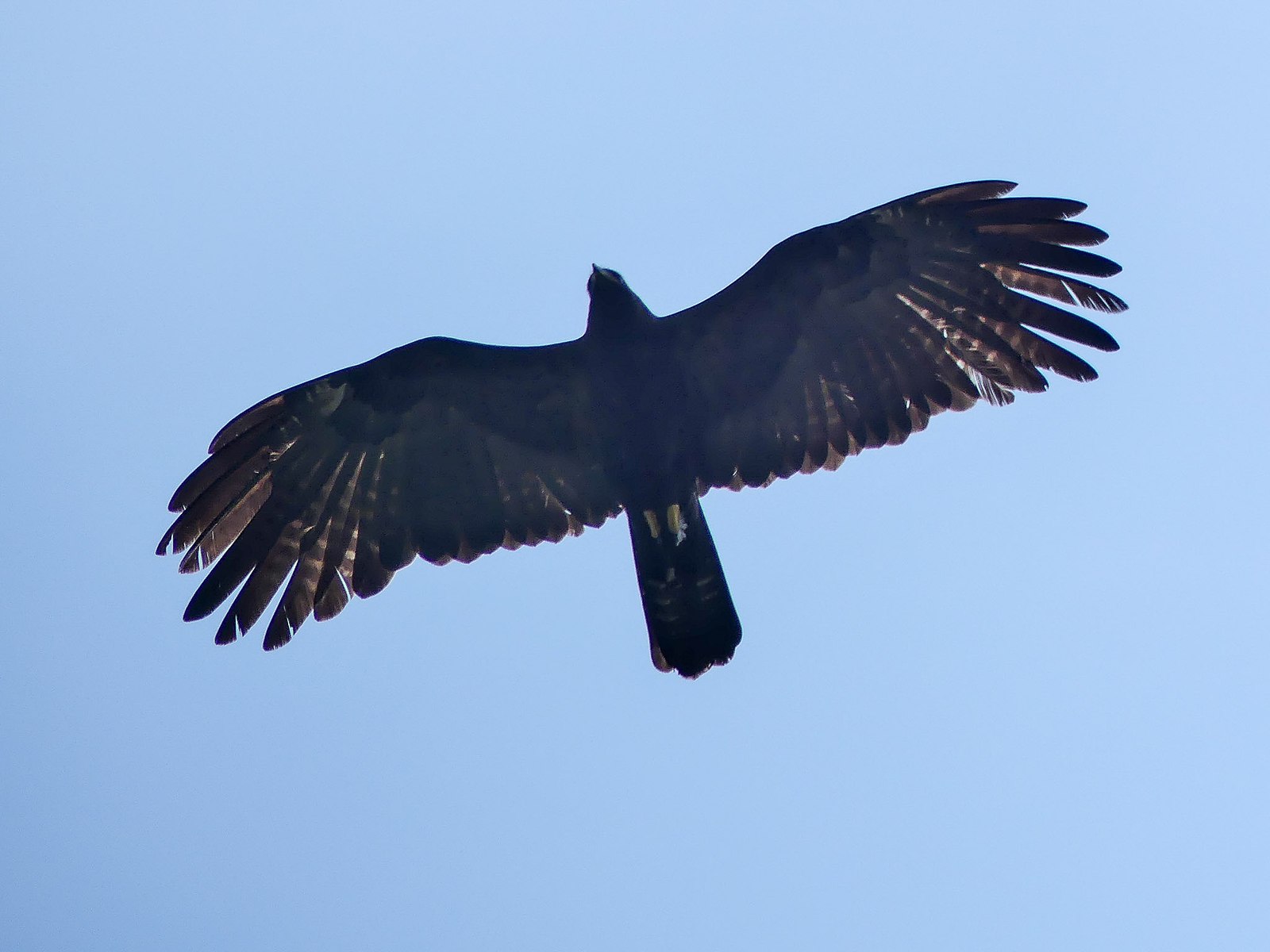Black eagles, like most birds, do not have teeth. Instead, they have beaks that are adapted to their specific dietary needs. The beak structure of black eagles is powerful and hooked, which is designed to tear into meat. Black eagles primarily feed on fish and small mammals, and their beaks are well-suited to capture and consume such prey.
The Evolution of Beaks in Birds
The evolution of beaks in birds is a crucial adaptation that allowed for more efficient and specialized feeding strategies. Over time, many bird lineages began to lose their teeth, likely due to the advantages of lighter skulls and reduced energy expenditure in maintaining teeth. The development of the crop and gizzard in birds’ digestive systems became essential for temporary food storage and digestion.
The Beak Structure of Black Eagles
 Image source: Black Eagle by Mike Prince
Image source: Black Eagle by Mike Prince
While black eagles do not have teeth, their beaks and digestive systems are highly specialized and adapted to their predatory lifestyle. The hooked beak of a black eagle is designed to tear into meat, and their crop and gizzard help in grinding down food into smaller parts for digestion.
The Powerful Beak
The beak of a black eagle is a formidable tool for hunting and feeding. It is sharp, hooked, and incredibly strong, allowing the bird to easily tear through the flesh of its prey. This specialized beak is essential for the black eagle’s hunting strategy, as it enables the bird to capture and consume a wide range of small mammals, birds, and fish.
The Crop and Gizzard
In addition to their powerful beaks, black eagles also have a specialized digestive system that helps them process their prey. Like other birds, black eagles have a crop, which is a pouch-like structure that temporarily stores food before it enters the gizzard. The gizzard is a muscular organ that grinds down the food, breaking it down into smaller pieces that can be more easily digested.
The Hunting Strategies of Black Eagles
Black eagles are skilled hunters, using their keen eyesight and powerful beaks to capture a variety of prey. They are known to hunt small mammals, such as rabbits and hares, as well as birds, fish, and even carrion. Their hunting strategies often involve soaring high above the ground, scanning for potential prey, and then swooping down to capture their target with their sharp talons and powerful beak.
Hunting Small Mammals
When hunting small mammals, black eagles will often perch on a high vantage point, such as a tree or cliff, and wait patiently for their prey to come into view. Once they spot a potential target, they will launch themselves into the air, using their sharp talons to grab the animal and their hooked beak to tear into its flesh.
Hunting Birds and Fish
Black eagles are also adept at hunting birds and fish. They may soar over bodies of water, scanning the surface for fish, and then dive down to snatch their prey from the water. When hunting birds, they may use their speed and agility to chase down and capture their targets in mid-air.
The Importance of Beak Adaptations in Birds
The evolution of beaks in birds is a fascinating example of how specialized adaptations can enable species to thrive in their environments. By developing highly specialized beak structures, birds like the black eagle have been able to exploit a wide range of food sources and become successful predators in their ecosystems.
The Diversity of Beak Shapes and Functions
The diversity of beak shapes and functions in birds is truly remarkable. From the long, slender beaks of hummingbirds to the powerful, hooked beaks of birds of prey, each beak type is adapted to a specific feeding strategy and dietary niche. This diversity has allowed birds to occupy a wide range of ecological niches and become one of the most successful and diverse groups of vertebrates on the planet.
The Importance of Beak Adaptations for Conservation
Understanding the importance of beak adaptations in birds is also crucial for conservation efforts. As habitats are destroyed and ecosystems are disrupted, the specialized feeding strategies of many bird species can be threatened. By studying the unique beak adaptations of birds like the black eagle, we can better understand their ecological roles and develop more effective conservation strategies to protect these remarkable creatures.
Conclusion
In conclusion, black eagles, like most birds, do not have teeth. Instead, they have highly specialized beaks that are adapted to their predatory lifestyle. The powerful, hooked beak of the black eagle is essential for tearing into the flesh of its prey, while the bird’s crop and gizzard help in the digestion of its food. The evolution of beaks in birds is a fascinating example of how specialized adaptations can enable species to thrive in their environments, and understanding these adaptations is crucial for the conservation of these remarkable creatures.
References:
– https://www.birdzilla.com/learn/do-birds-have-teeth/
– https://flexbooks.ck12.org/cbook/ck-12-advanced-biology/section/16.32/primary/lesson/bird-structure-and-function-advanced-bio-adv/

